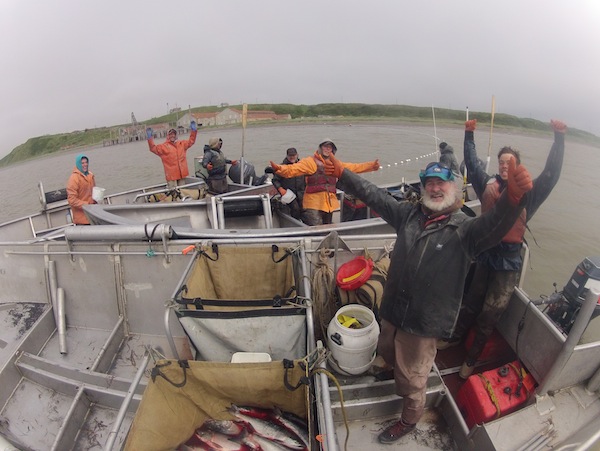Alaska’s salmon catch was nearing 14 million fish as of July 7; more than two-thirds were sockeyes, mostly from Bristol Bay, where catches continued to build.
The year-to-date "statewide harvest of about 9.7 million sockeye is 56 percent and 62 percent behind the 2019 and 5-year average pace, respectively," said Garrett Evridge of the McDowell Group, in a weekly report for the state. "The deficit is improving though, due primarily to Bristol Bay which exceeded daily harvest of 1 million fish for the first time this season on Friday," July 3.
Evridge also noted that the second week of July is typically the peak for Bristol Bay production, but that the data so far "indicates a late salmon return. Most other sockeye-producing regions have improved from last week but generally lag historical levels."
Anecdotal reports said the average sizes of sockeye are down at Bristol Bay and the same for pinks at the Alaska Peninsula.
King salmon in Southeast also are smaller, according to the Alaska Department of Fish and Game. The kings were weighing in at 11.7 pounds on average, down 2 pounds compared to the past five years. Trollers can catch over 85,000 Chinook salmon this summer, a 51 percent increase from last year. The summer fishery opened July 1 and was expected to last about one week.
Fishermen in Quinhagak have formed a group of 70 harvesters to revitalize commercial salmon fishing in Kuskokwim Bay. The Independent Fishermen of Quinhagak Cooperative also includes members from Goodnews Bay, Platinum, and Eek who will sell to E&E Foods. It’s the first fishery since 2016 when the Coastal Villages Region Fund pulled the plug on buying local fish.
Divers in Southeast continue to pull up giant geoduck clams, and crabbers are into a two-month summer fishery for Dungeness based on a strong start to the season. Only 117 crabbers are on the grounds, down from 170 last summer; the price has dropped to $1.72 a pound compared to $2.97 last season.
Kodiak crabbers also are dropping pots for Dungies.
A red king crab fishery is open at Norton Sound, but because of concerns for the stock, most fishermen were opting to fish for cod.
A golden king crab fishery opens on Aug. 1 in the Bering Sea with a 6.6 million pound quota.
Lingcod fishery opened in Prince William Sound on July 1.
Herring food and bait fishery opened June 29 at Dutch Harbor.
Scallop fishing opened in the Gulf of Alaska and Bering Sea on July 1 with a reduced quota of 277,500 pounds of shucked meats. Almost half of that goes to the Yakutat region.
Halibut landings were nearing 6 million pounds, or 36 percent of the 16 million pound catch limit. Homer leads for landings, followed by Sitka and Kodiak.
For blackcod, 10.5 million pounds of the nearly 32 million pound quota have been taken. Sitka has seen the most deliveries, followed by Dutch Harbor and Kodiak.
Fishing for pollock, cod, flounders and other species is ongoing in the Gulf of Alaska and Bering Sea.







